Finally, a glacier close-up!
A GOOD DAY FOR A GLACIER
Technically speaking, the next morning didn’t dawn bright and blue as there was no dawn and the nighttime sunlight never even seemed to dim.
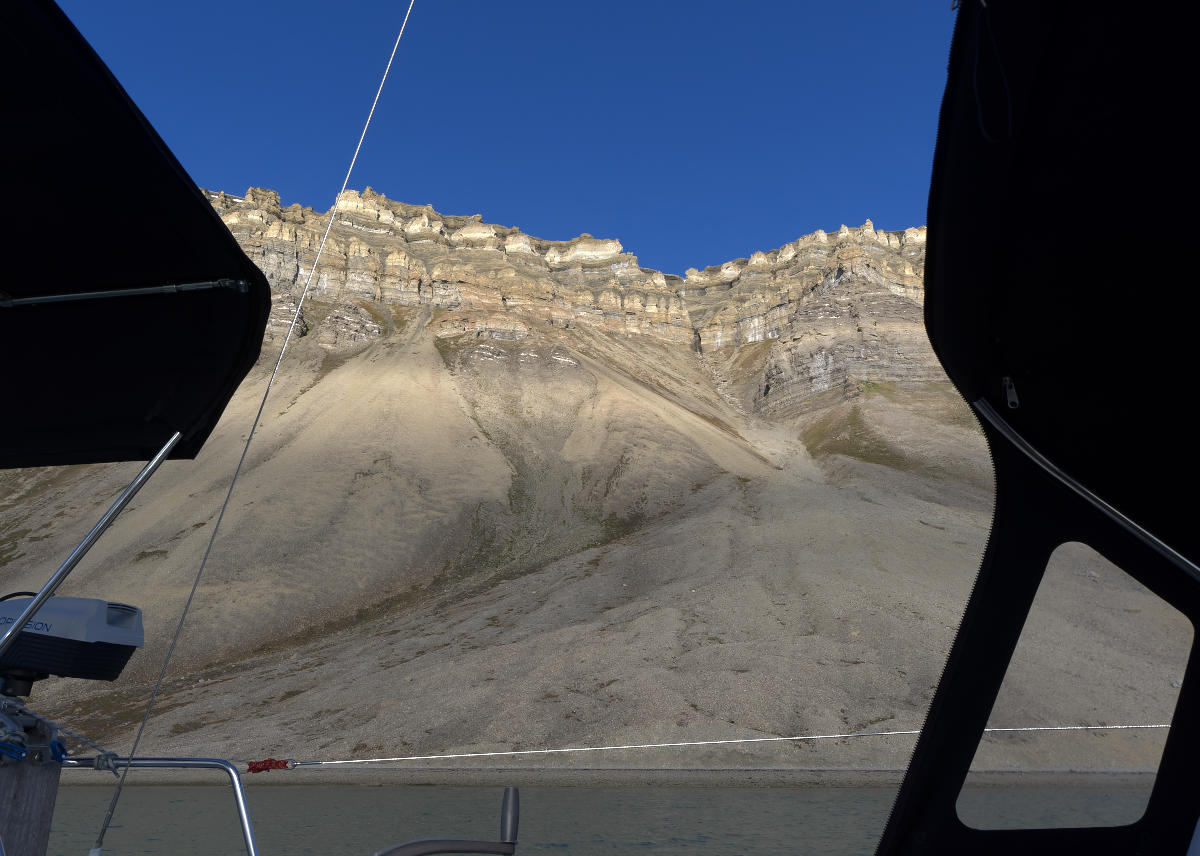
Not a bad view during morning tea in the cockpit.
So, the next morning it just was bright and blue and we set off, once again with SY Flying Fish, in another attempt to get close to a glacier. This time our attempt was met with spectacular success.
Traveling through Templefjorden towards Von Postbreen.
We motored along past the Martian landscapes of the Templefjorden and then in amongst the icebergs that had calved off the Von Postbreen.
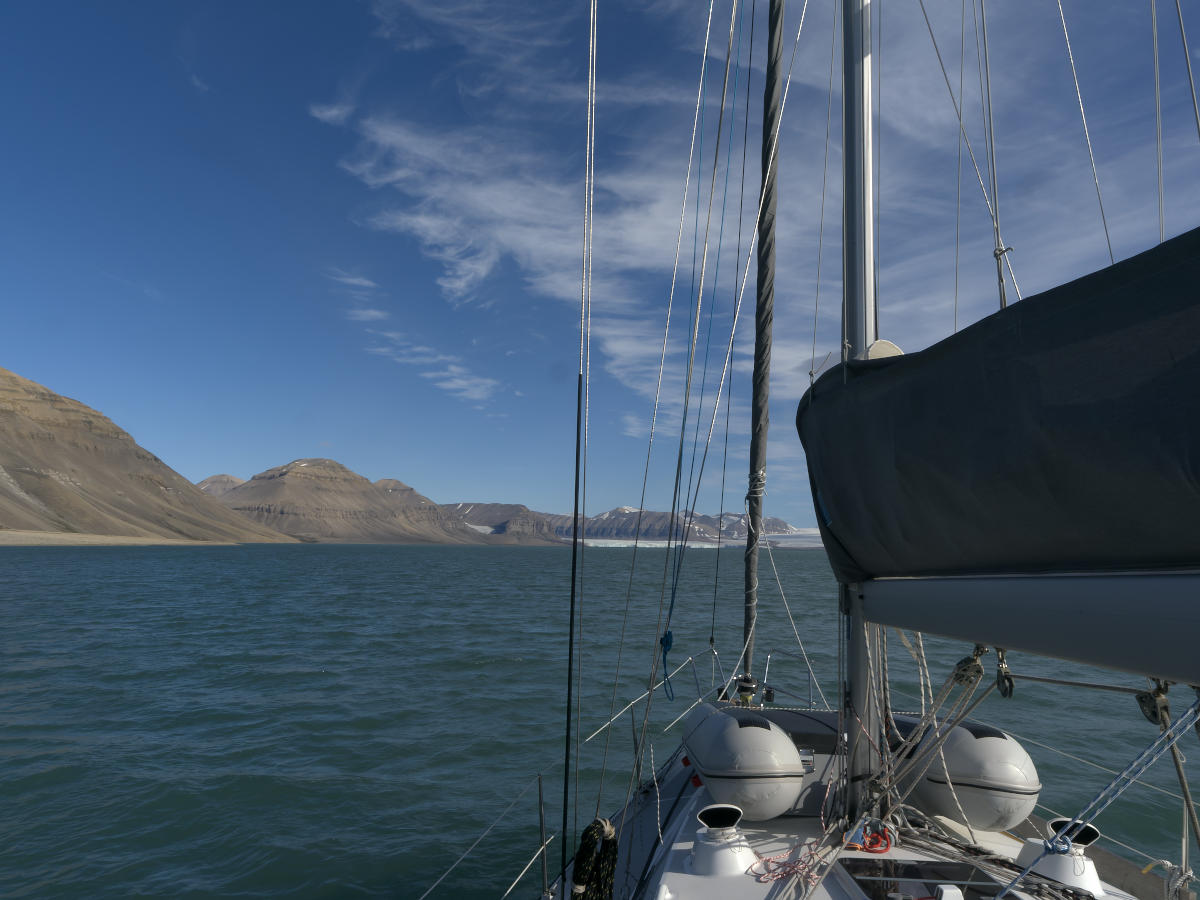
Von Postbreen in the distance.
Getting closer and closer to the glacier.
HOW CLOSE CAN YOU GO?
We went in as close as was sensible, 200-300m (measured with radar), and loitered there for a couple of hours watching huge shafts of ice crash into the water and enjoying the scene around us. Any closer, and you run the risk of ice bits either falling on top of you or popping out of the water under you, and/or large waves swamping the boat following ice bits breaking off the glacier. Reasons enough to keep a safe distance.
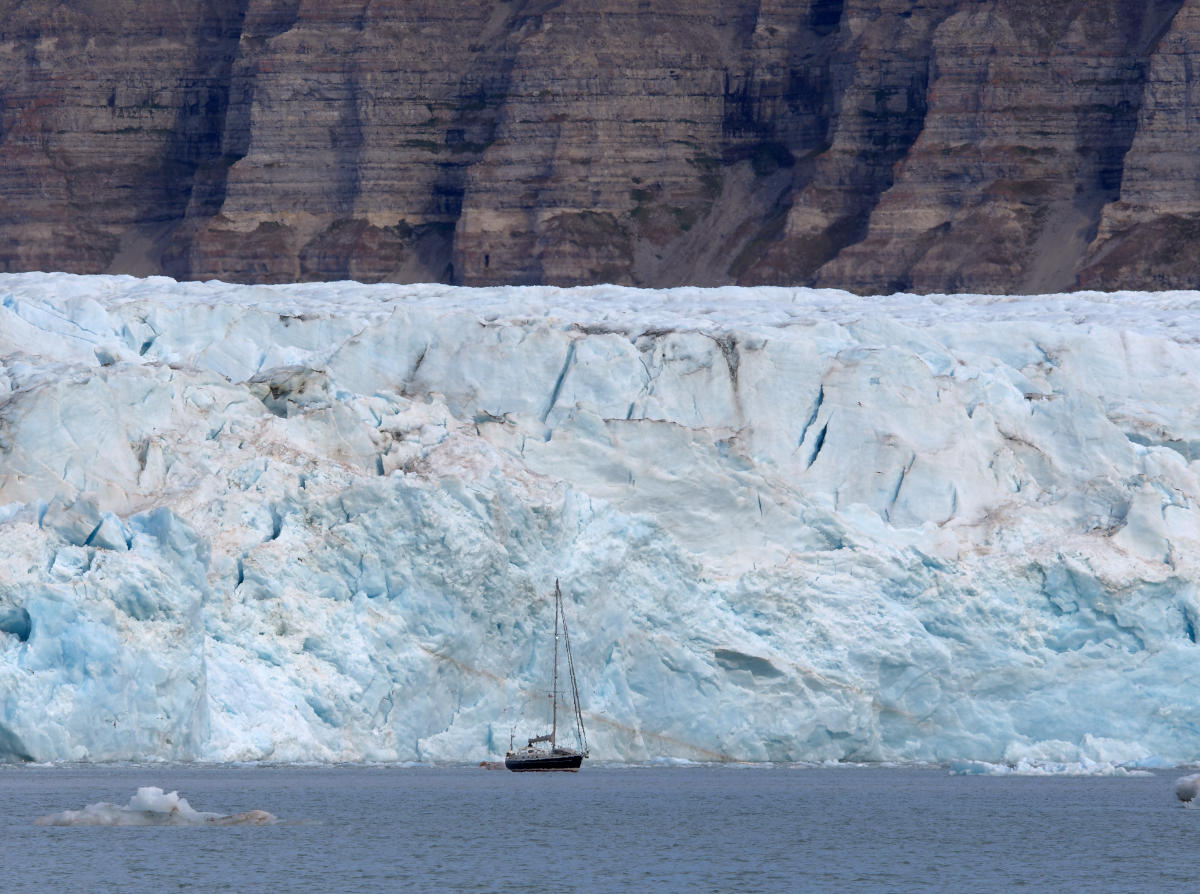
SY Flying Fish in front of, but probably still 200-300 m away from the glacier.
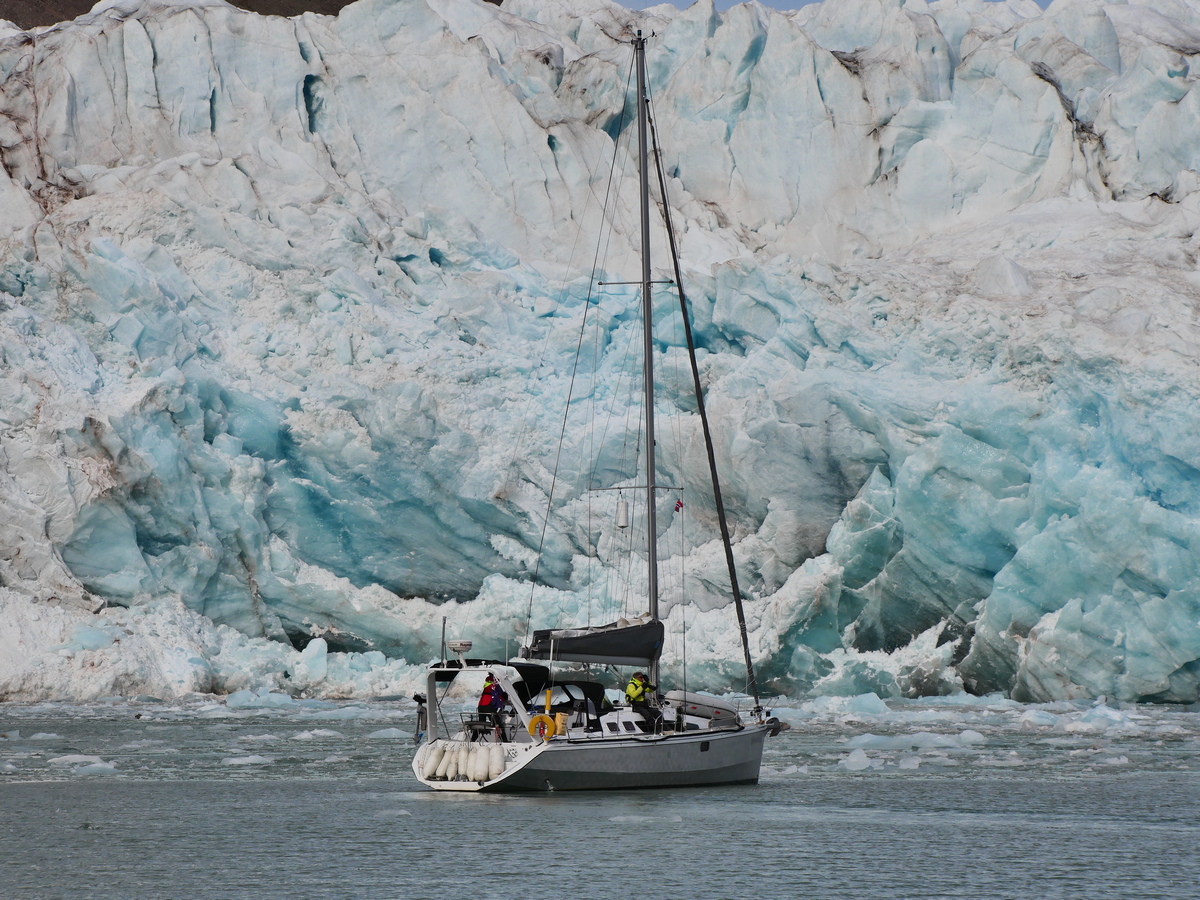
Yuma about 200-300 m away from the glacier front (courtesy SY Flying Fish).
Much of the time we were able to loiter in areas kept clear of bergs by wind and current, but at other times we had bergy bits bumping gently against the hull. Needless to say, we steered well clear of the bigger bits.
Bergy bits floating in front of the glacier.
Every now and again the wind, which had held the fresh water flowing into the fjord from the southern side of the glacier to that side, would drop. Soon, a spreading layer of silt-brown freshwater and trash ice would come towards us, hissing, popping and bubbling across the surface of the blue-green-grey seawater.
Brown freshwater layer with trash ice moving closer and closer.
It would advance eerily as if threatening to envelope us until the wind piped up again or a stronger current would push it away like some kind of salvation. I’m sure our motor appreciated this rescue effort.
More glacier and bergy bits.
By the time we were back in Bjonahamna, the wind had returned and was blowing strongly out of the east. We anchored up in a sheltered spot, this time even closer to those worrying scree slopes, set our anchor alarm and settled in for the night.
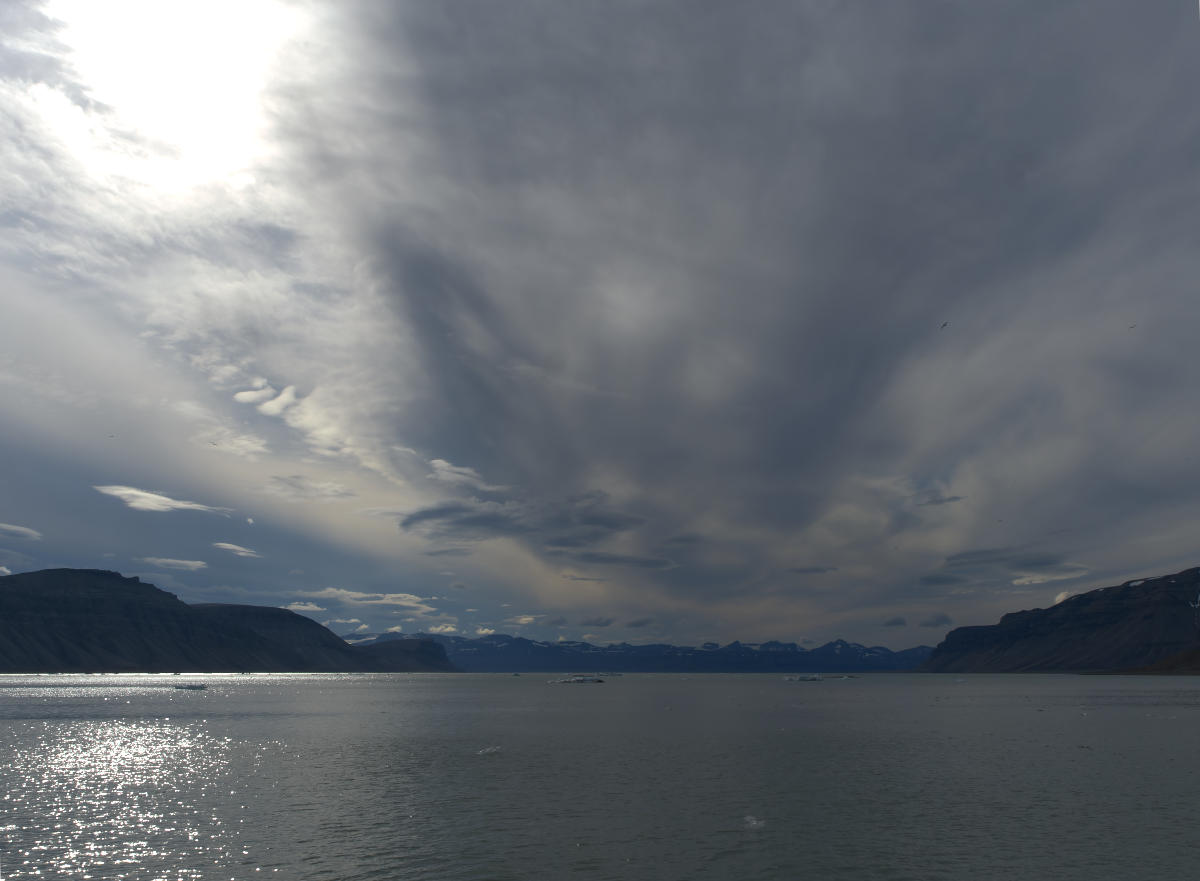

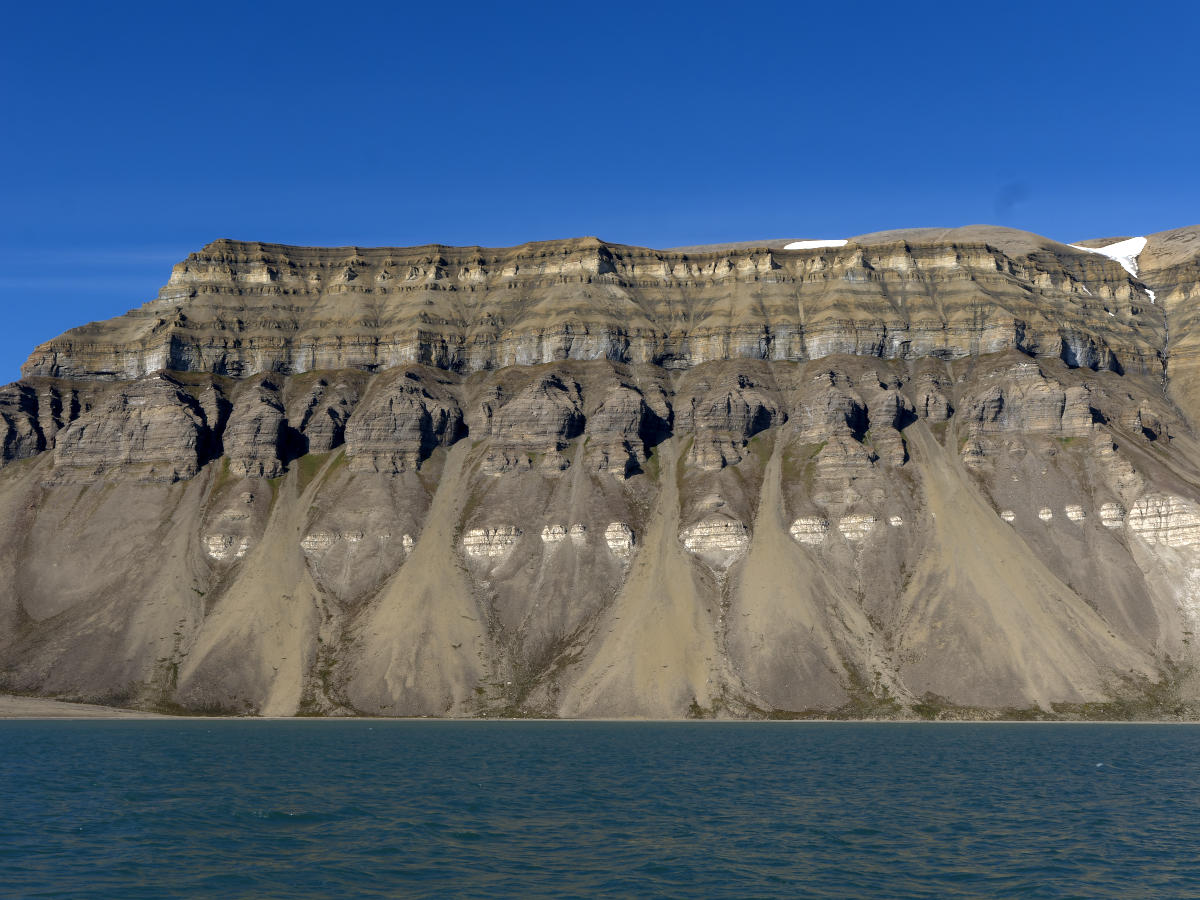
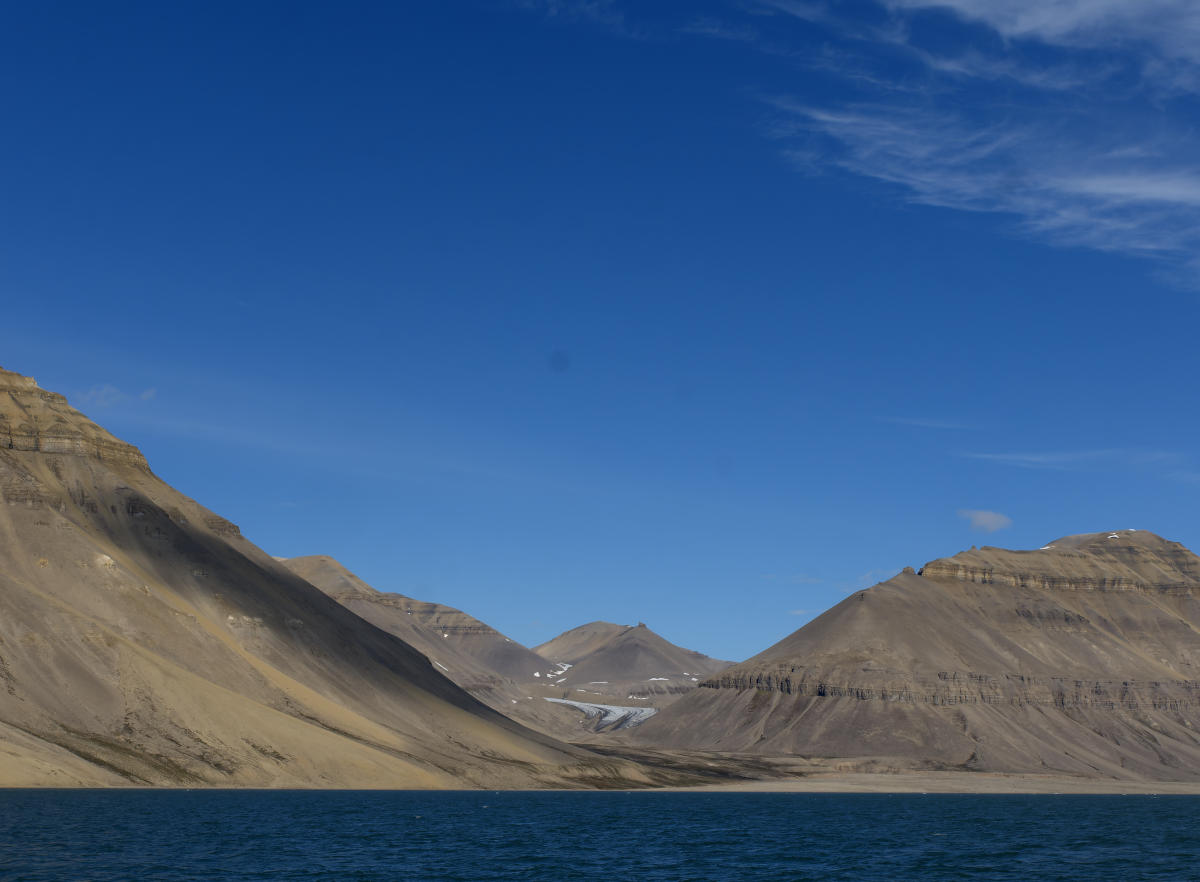
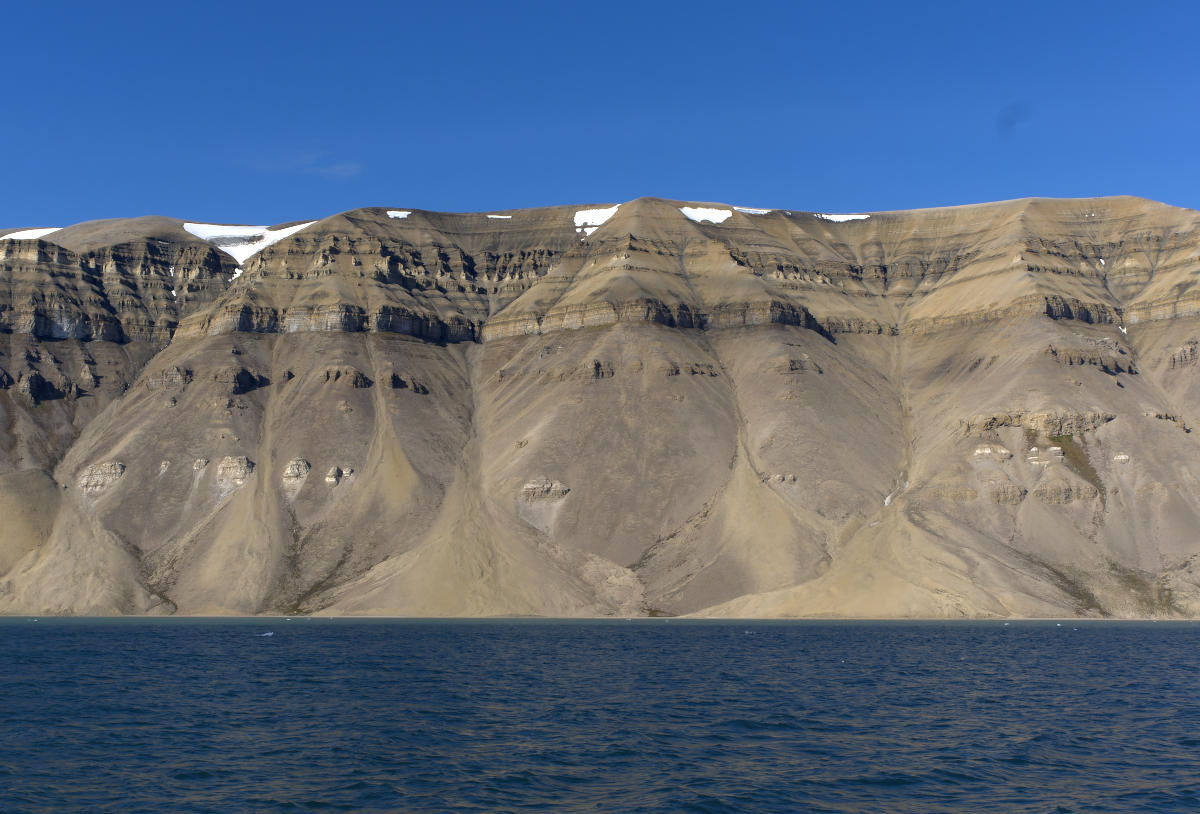

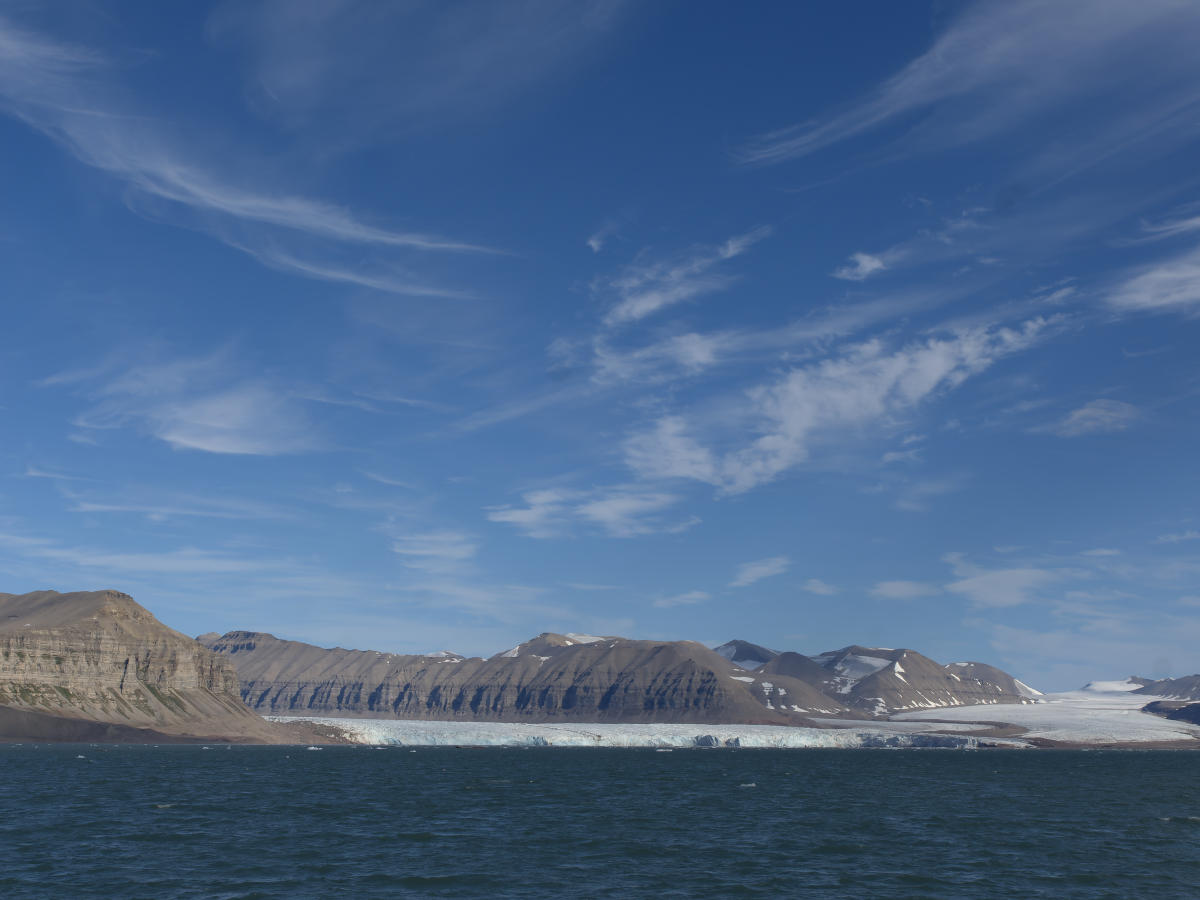
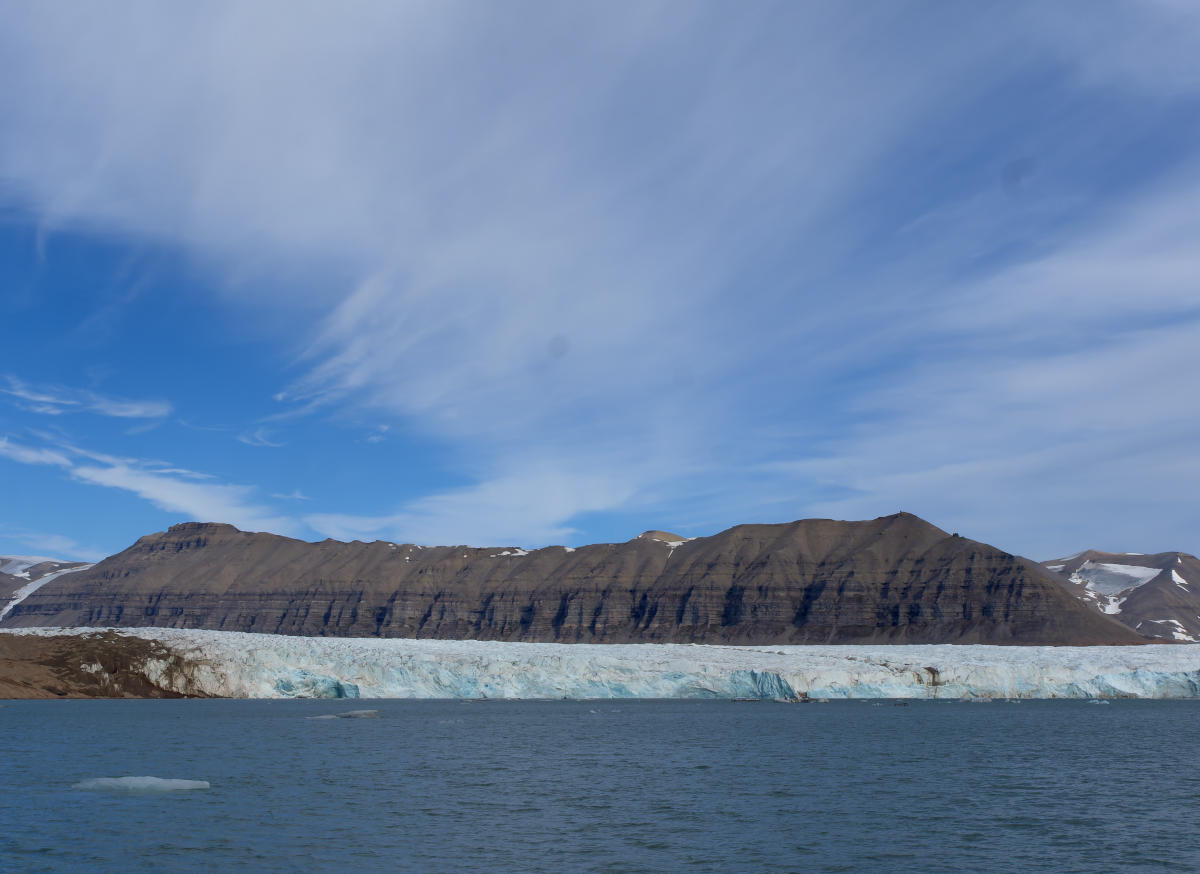
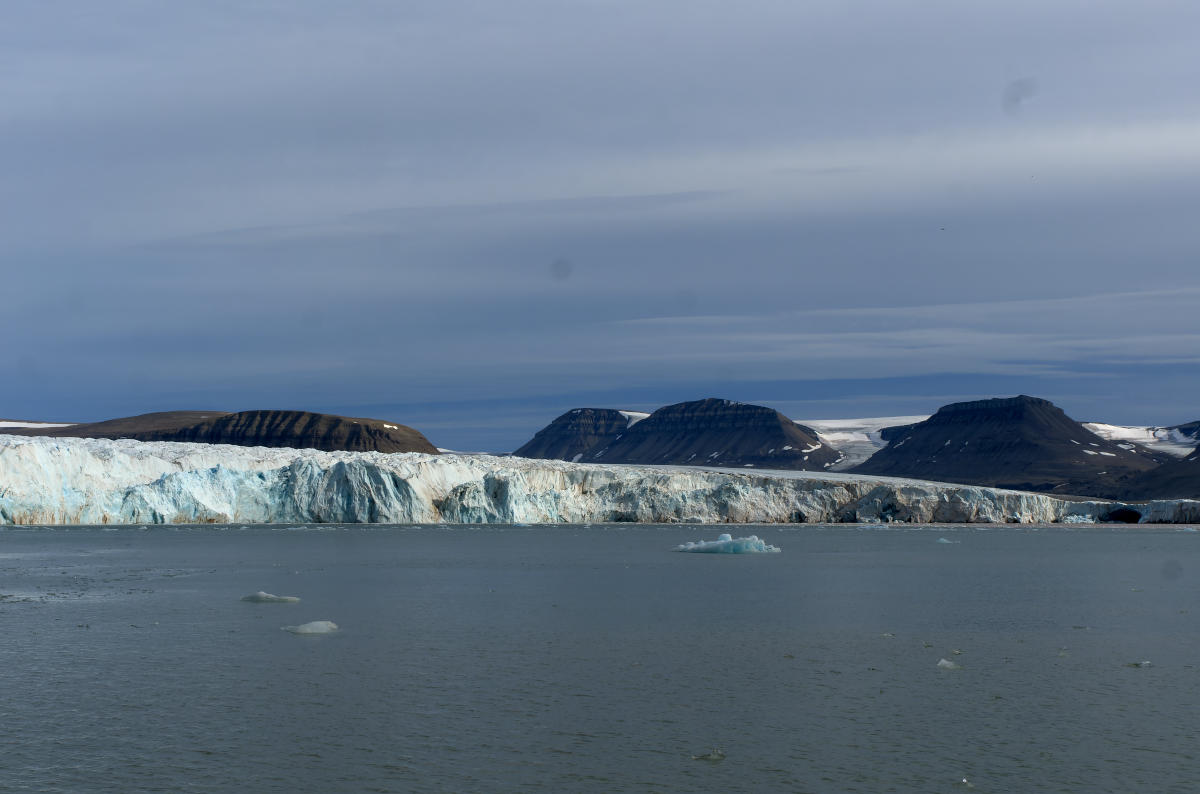
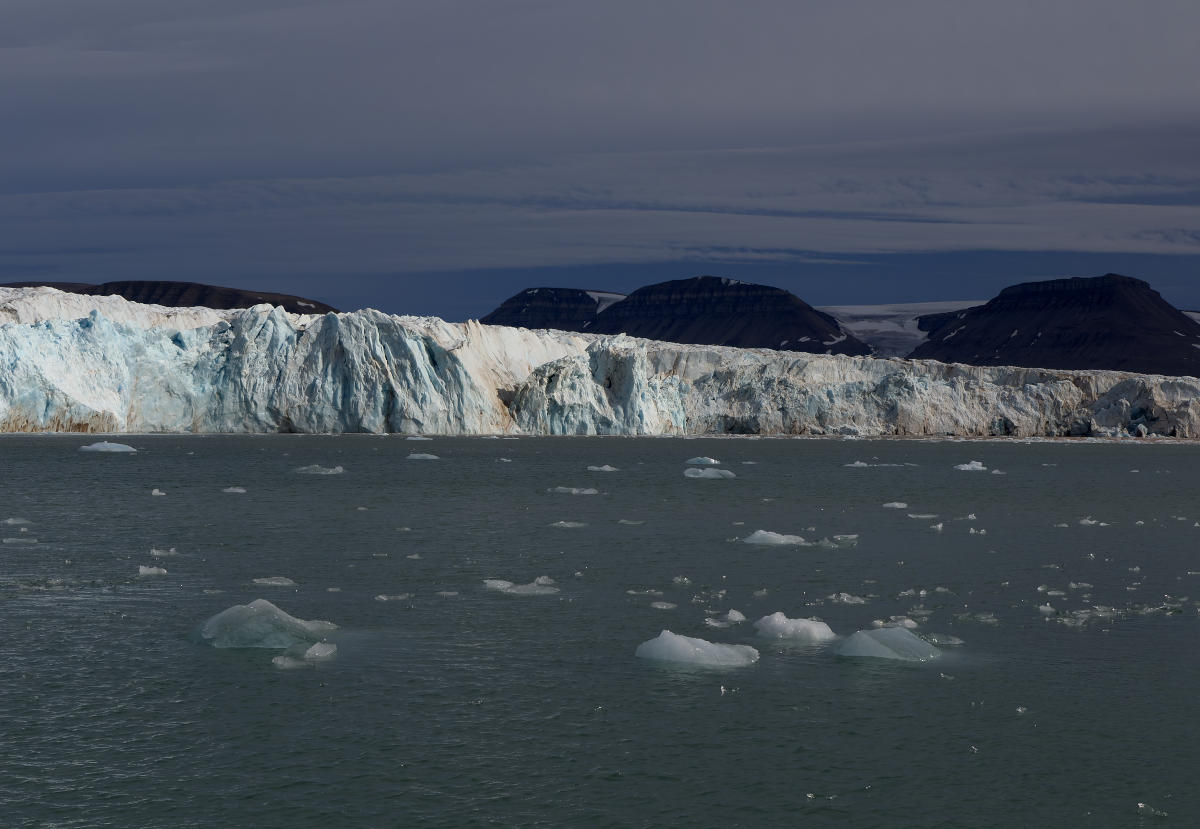
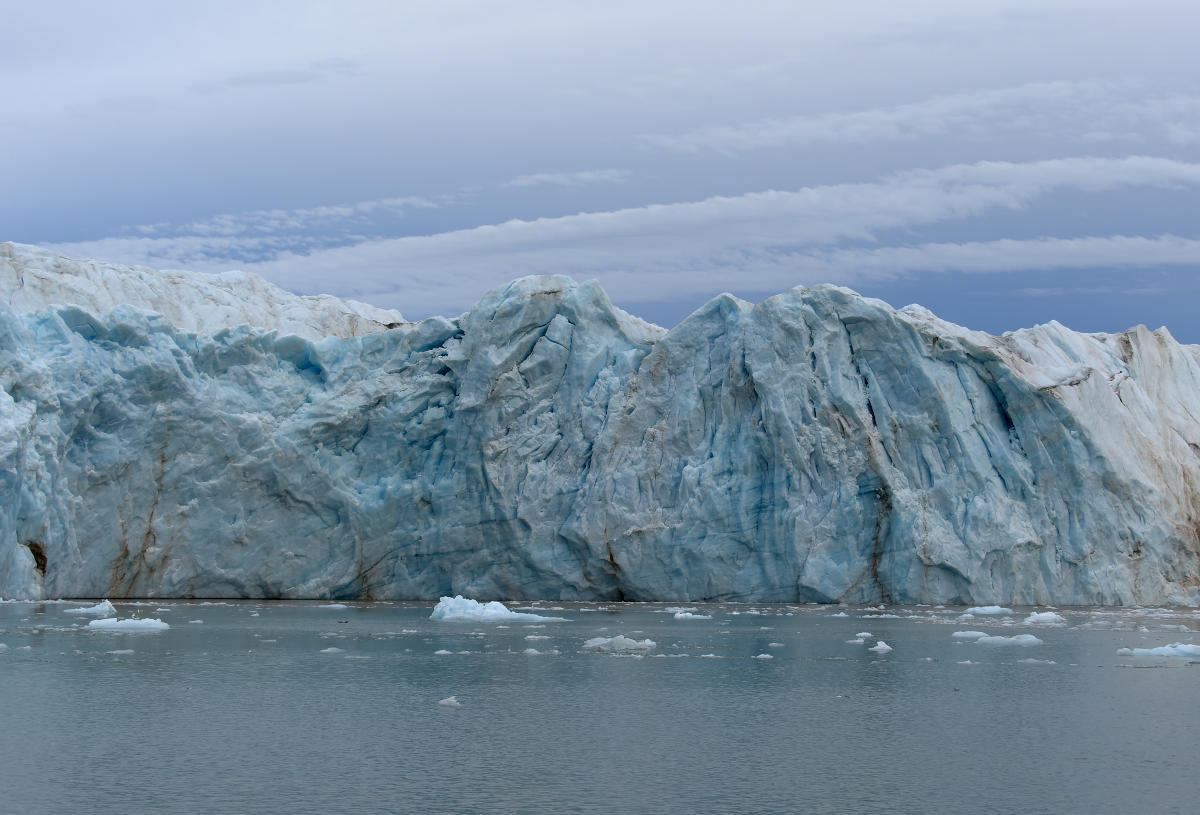
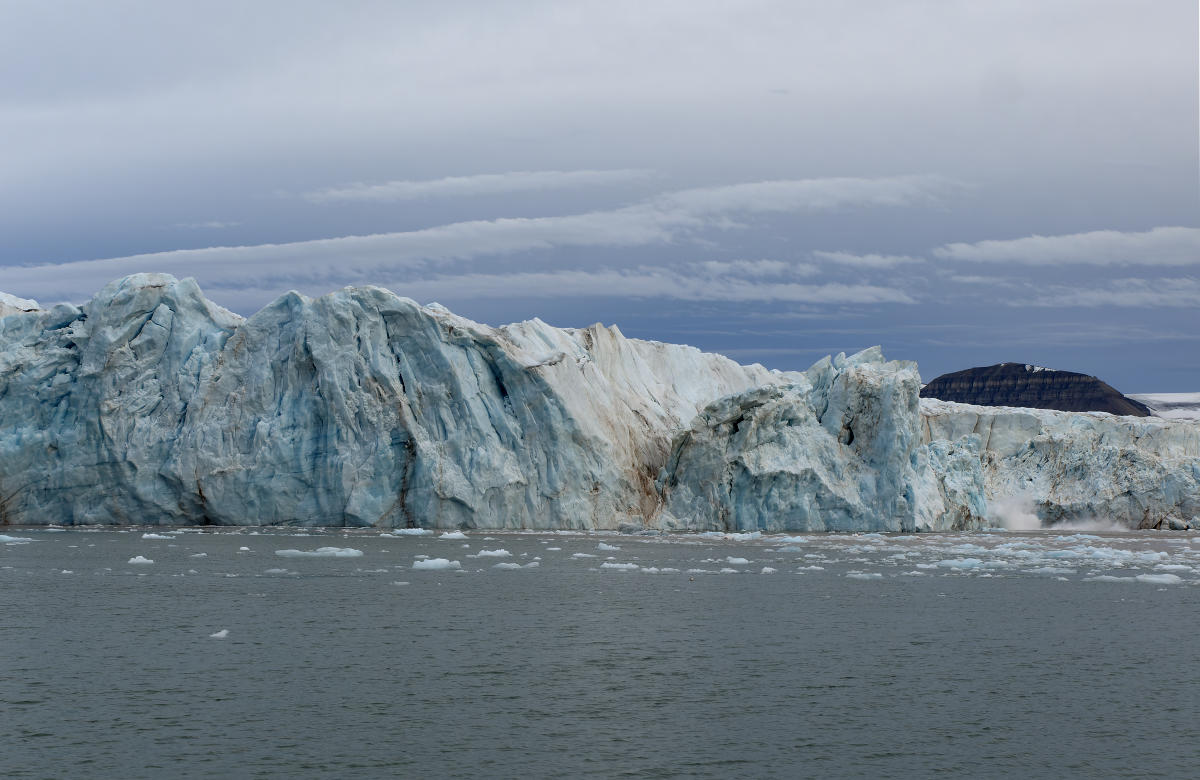
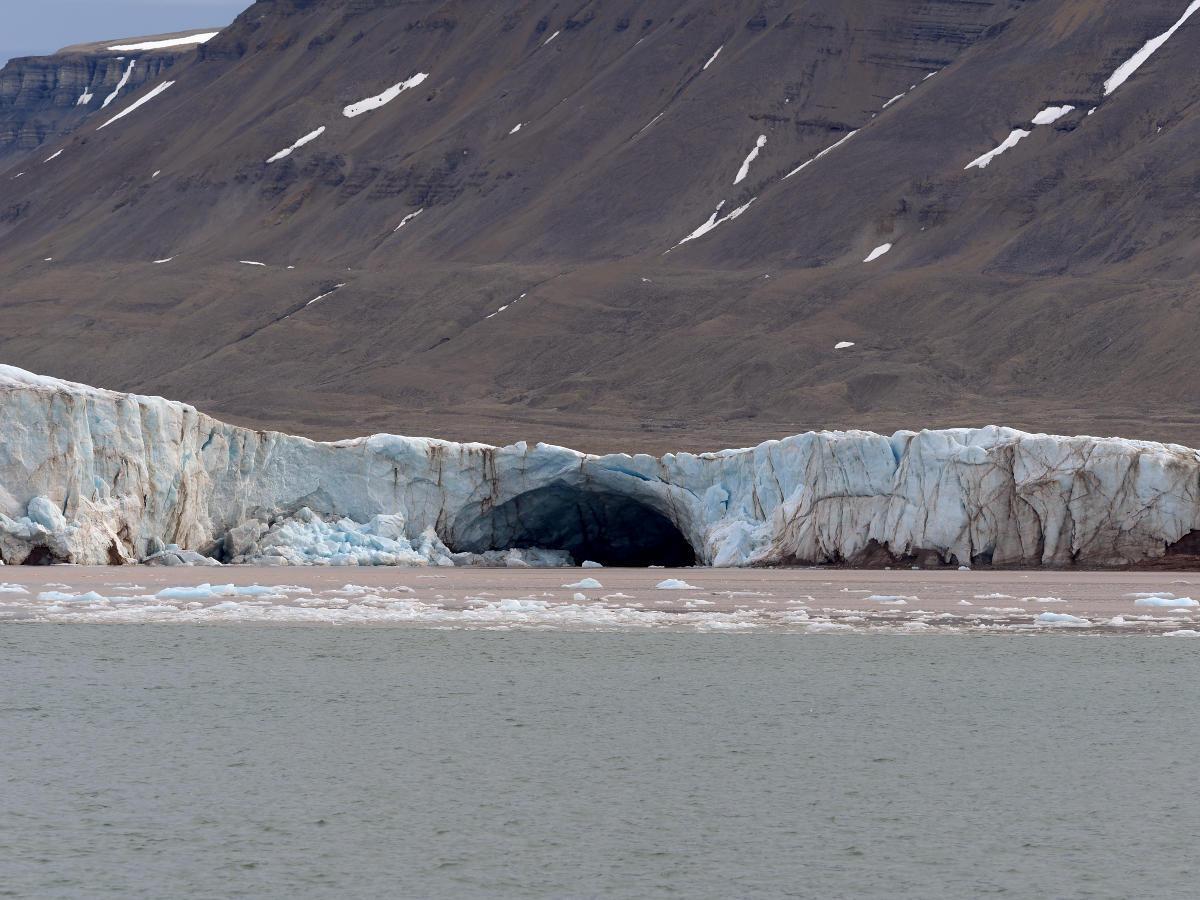
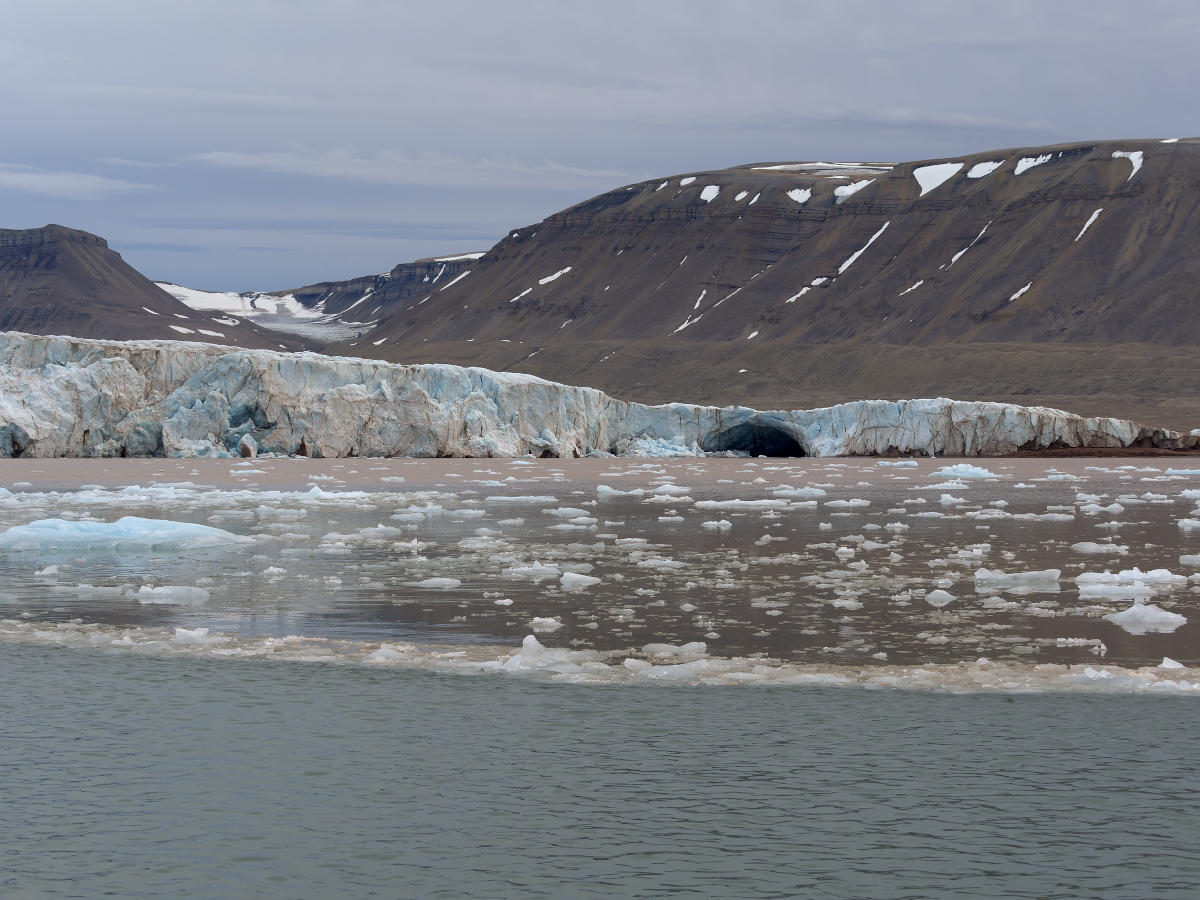
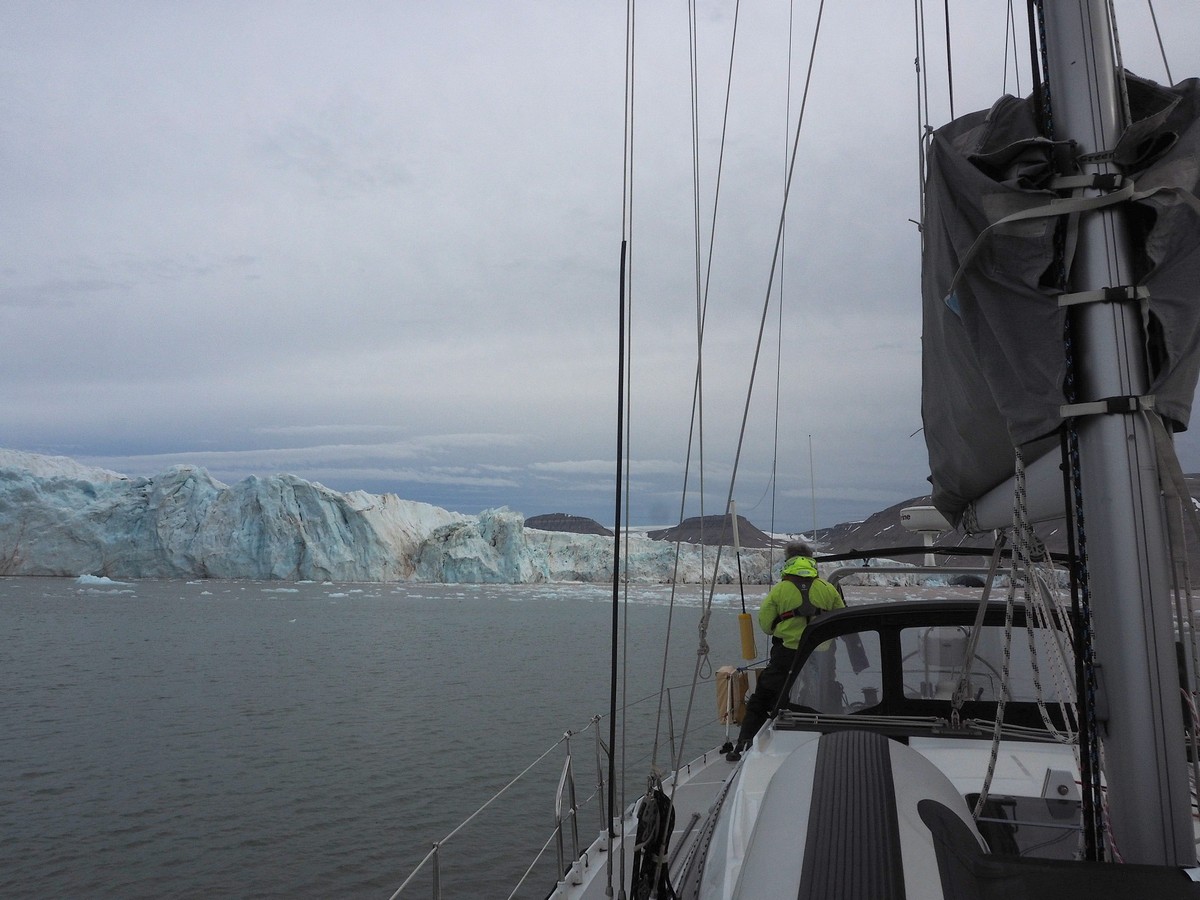
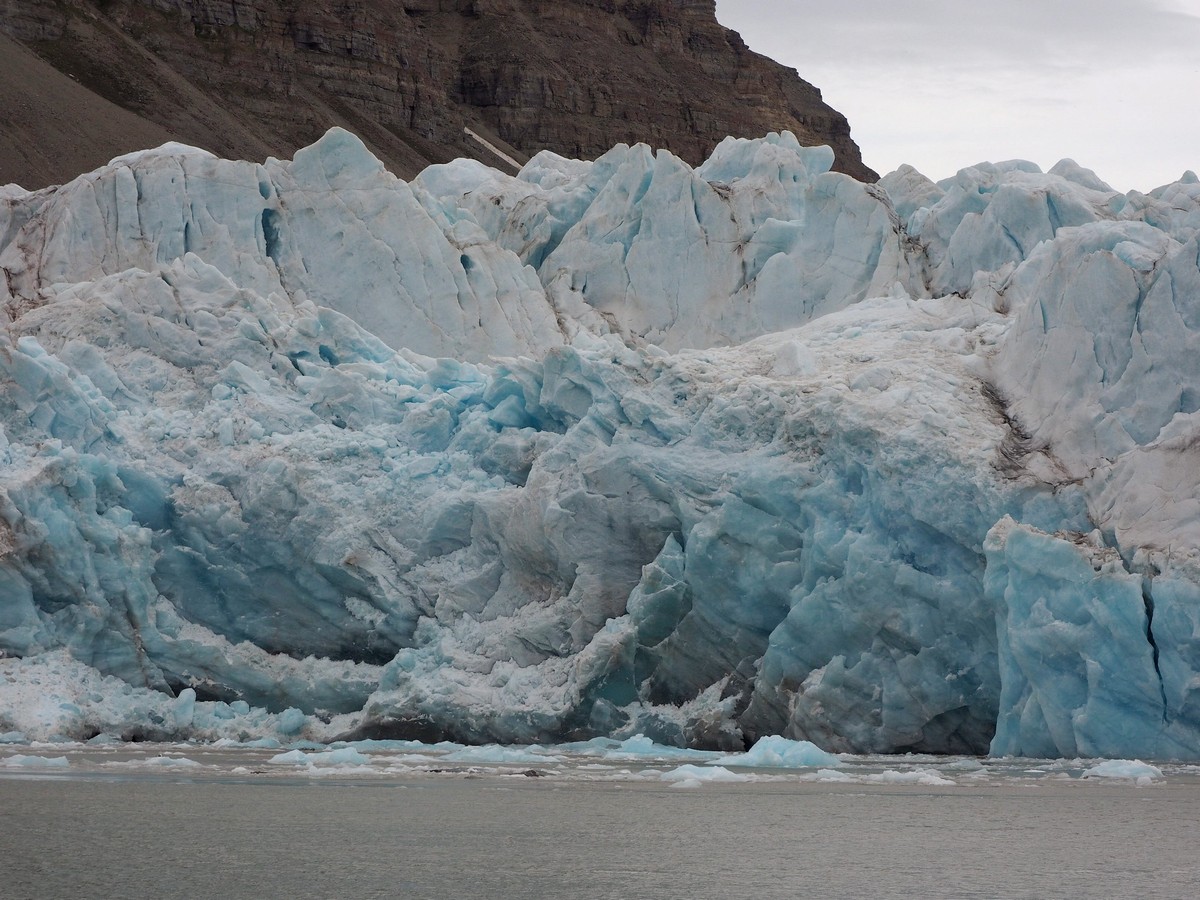

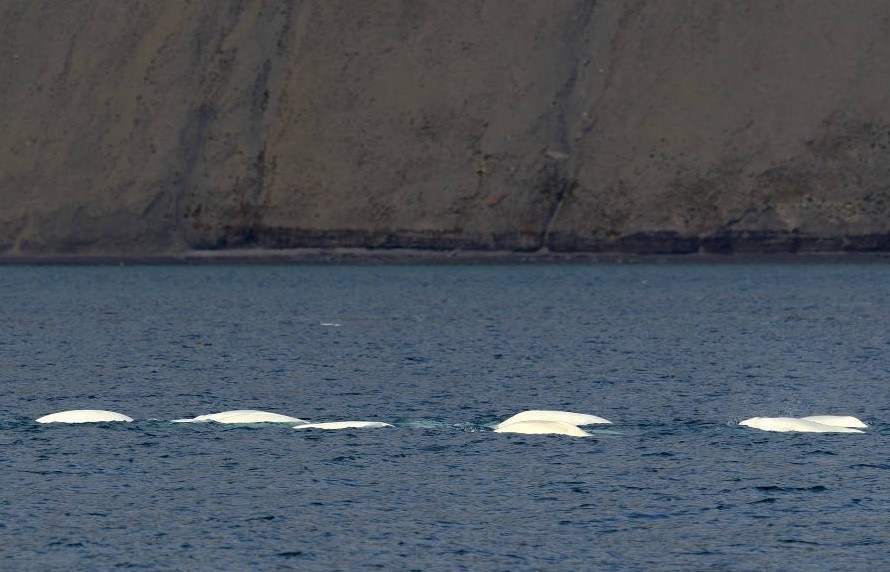
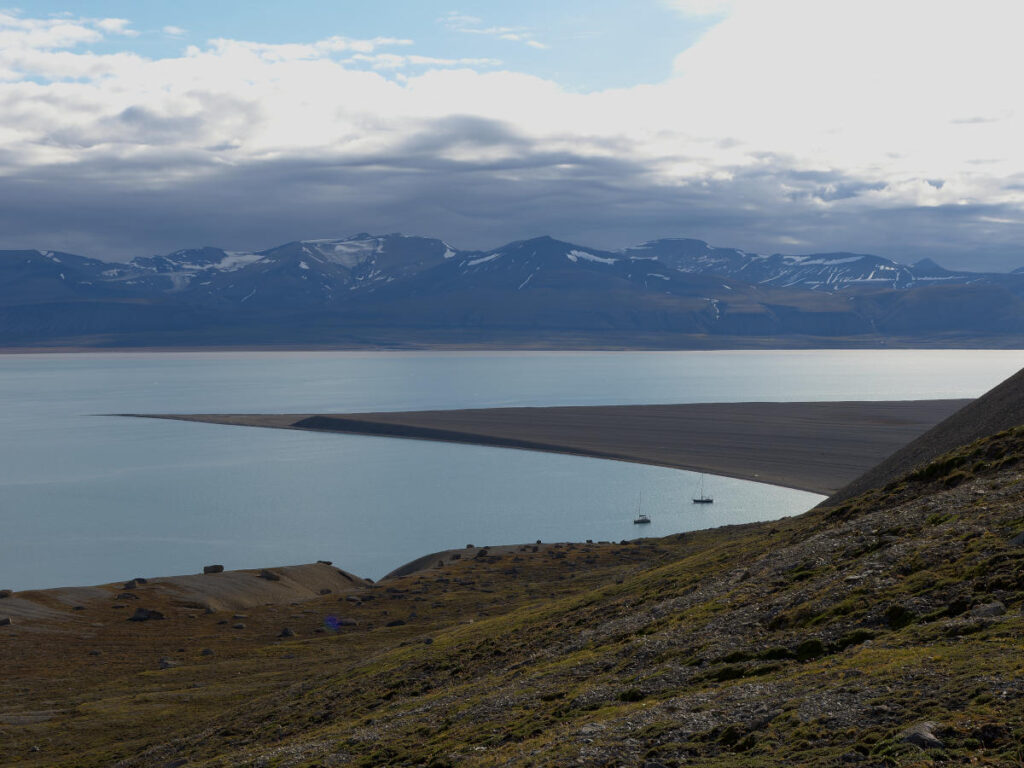
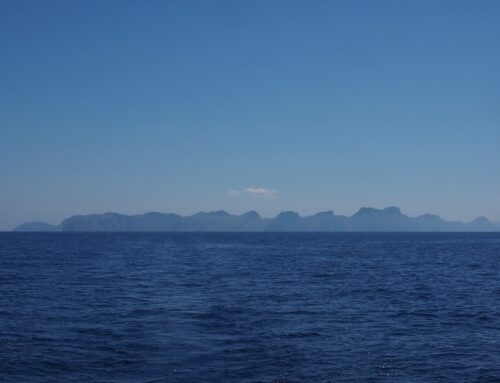
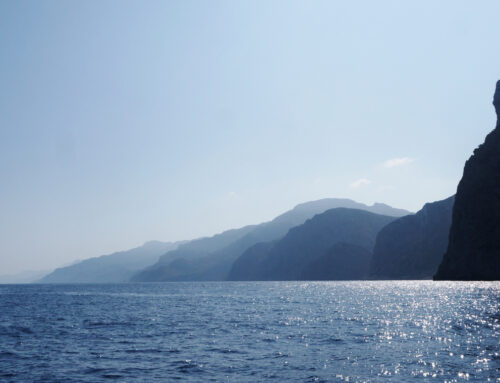
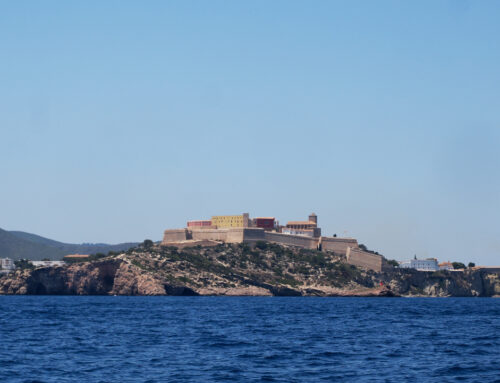
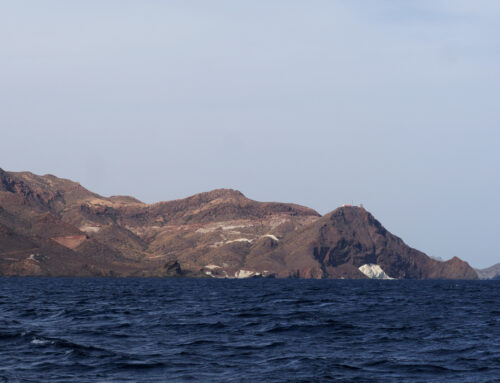
That’s some adventure you two are having! At this point in time (I’m recovering from a dose of the flu) I can’t say that I’m jealous though.
Continue enjoying your travels and we’ll see you in November.
Jim & Susanne
I hope that flu is now well gone. I think you’d enjoy it here though, Jim, it is a very different place
You are the witnesses of the effects of the warmer climate conditions in August 2023? Now experiencing 30o Celcius in France in early September, I wonder how it is at other latitudes.
Climate change has definitely wrought big changes here, PM. Ijsfjord, the biggest fjord on the west coast and where Longyearbyen is located, no longer freezes solid and the glaciers are all in retreat. On several occasions we sailed and anchored at places where our charts told us we were miles inland. The charts are not that old.
One year later, i received this News alert about climate change in Svalbard. I post it here for those who might be interested. It’s in french but easily translated on line. That is not an optimist one, sorry for that. https://www.futura-sciences.com/planete/breves/rechauffement-climatique-temperatures-ne-devraient-physiquement-pas-etre-possibles-bouleversent-climatologues-svalbard-9922/